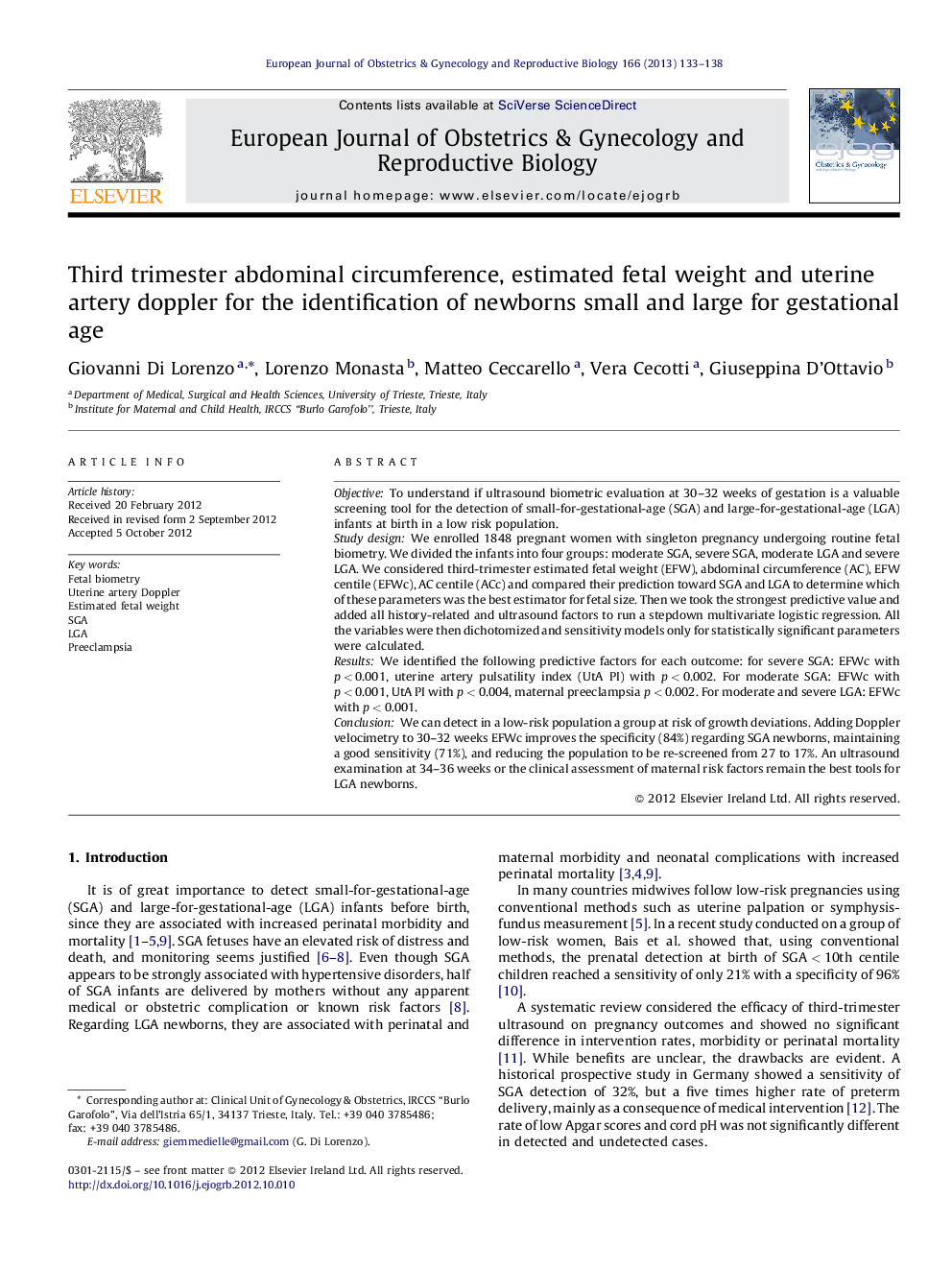| Article ID | Journal | Published Year | Pages | File Type |
|---|---|---|---|---|
| 3920277 | European Journal of Obstetrics & Gynecology and Reproductive Biology | 2013 | 6 Pages |
ObjectiveTo understand if ultrasound biometric evaluation at 30–32 weeks of gestation is a valuable screening tool for the detection of small-for-gestational-age (SGA) and large-for-gestational-age (LGA) infants at birth in a low risk population.Study designWe enrolled 1848 pregnant women with singleton pregnancy undergoing routine fetal biometry. We divided the infants into four groups: moderate SGA, severe SGA, moderate LGA and severe LGA. We considered third-trimester estimated fetal weight (EFW), abdominal circumference (AC), EFW centile (EFWc), AC centile (ACc) and compared their prediction toward SGA and LGA to determine which of these parameters was the best estimator for fetal size. Then we took the strongest predictive value and added all history-related and ultrasound factors to run a stepdown multivariate logistic regression. All the variables were then dichotomized and sensitivity models only for statistically significant parameters were calculated.ResultsWe identified the following predictive factors for each outcome: for severe SGA: EFWc with p < 0.001, uterine artery pulsatility index (UtA PI) with p < 0.002. For moderate SGA: EFWc with p < 0.001, UtA PI with p < 0.004, maternal preeclampsia p < 0.002. For moderate and severe LGA: EFWc with p < 0.001.ConclusionWe can detect in a low-risk population a group at risk of growth deviations. Adding Doppler velocimetry to 30–32 weeks EFWc improves the specificity (84%) regarding SGA newborns, maintaining a good sensitivity (71%), and reducing the population to be re-screened from 27 to 17%. An ultrasound examination at 34–36 weeks or the clinical assessment of maternal risk factors remain the best tools for LGA newborns.
